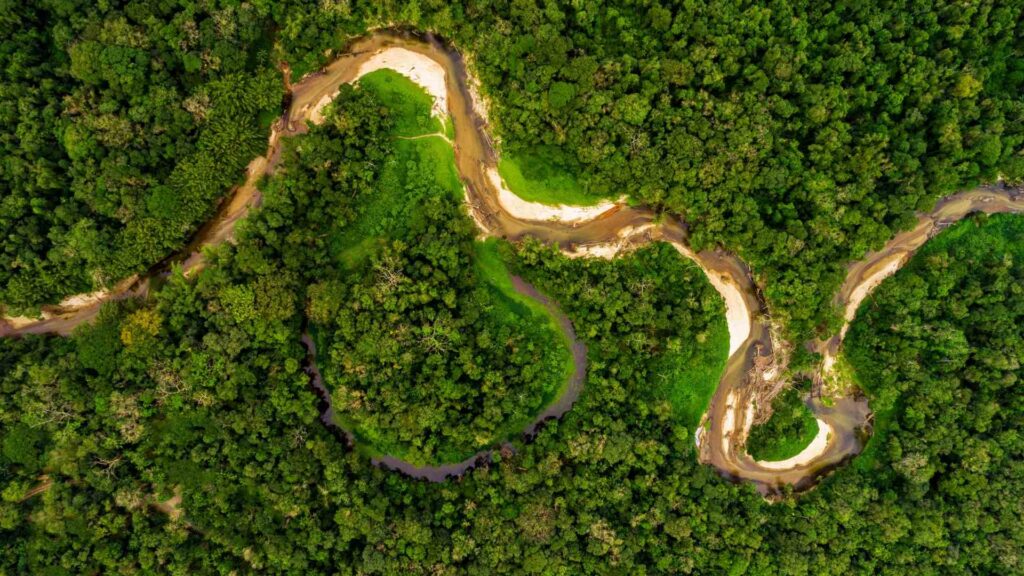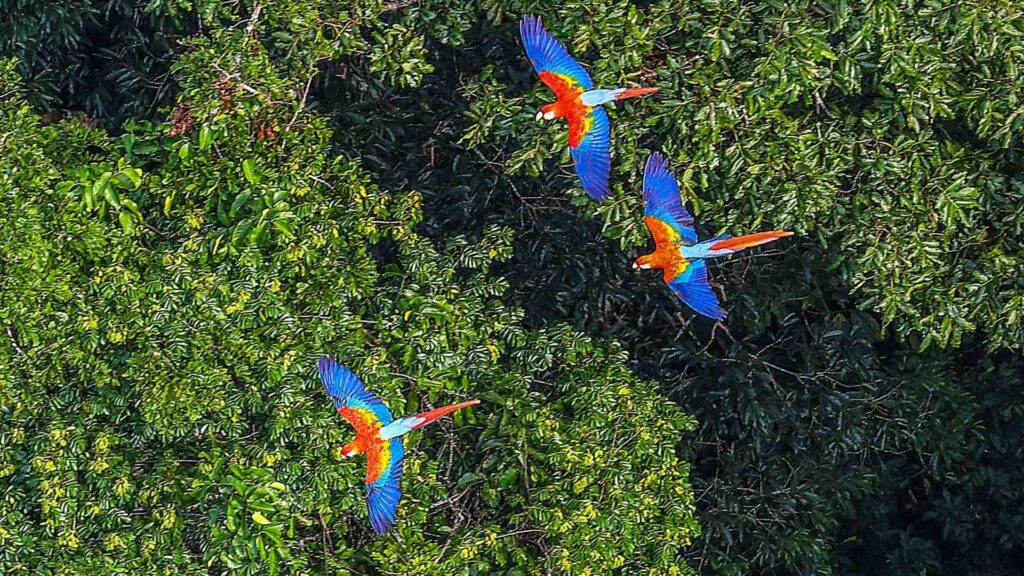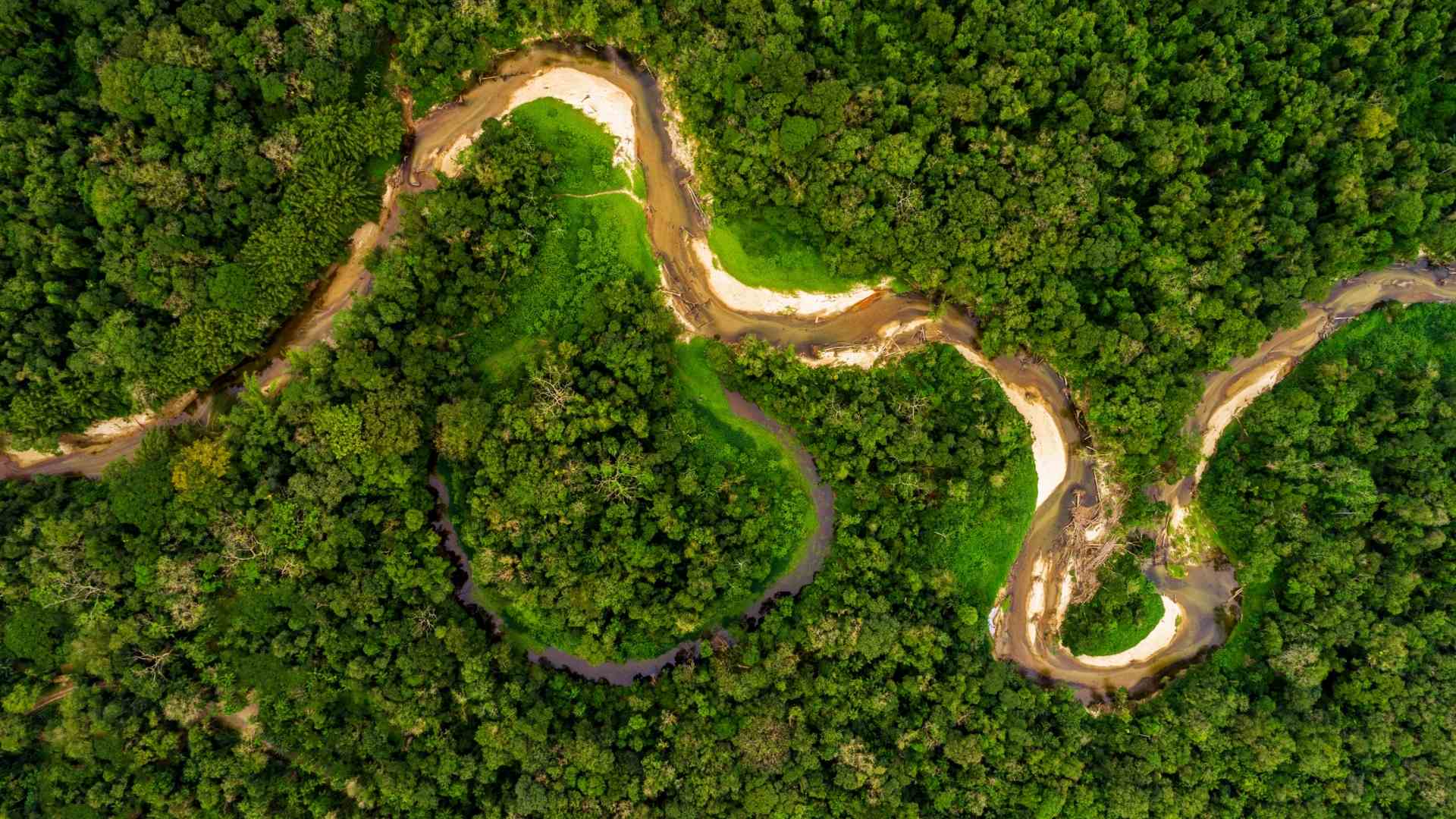We use affiliate links to run our site. When you buy through links on our site, we may earn an affiliate commission, without any added cost to you. Learn more
The Amazon rainforest is a vast, lush ecosystem that covers much of South America. It is the largest rainforest in the world and is home to a diverse array of plant and animal species.
The Amazon provides a range of ecosystem services, including carbon sequestration, water regulation, and nutrient cycling. However, the Amazon is also under threat from deforestation, mining, and other human activities.
In this article, we will explore some interesting facts about the Amazon rainforest that highlight its unique qualities and importance.
Location and Size of the Amazon Rainforest
The Amazon rainforest spans nine countries in South America, including Brazil, Peru, Colombia, and Venezuela. It covers an area of approximately 6.7 million square kilometers, which is roughly the size of the contiguous United States.
The Amazon is the largest rainforest in the world, and it contains around 10% of the world’s known species.

Climate and Weather in the Amazon Rainforest
The Amazon rainforest has a tropical climate with high temperatures and humidity year-round. It receives an average of 9 feet (2.75 meters) of rain each year, which contributes to its lush vegetation and high biodiversity.
The Amazon is also home to some of the world’s largest rivers, including the Amazon River, which is the second-longest river in the world.
Plant Life in the Amazon Rainforest
The Amazon rainforest is home to an estimated 40,000 plant species, many of which are endemic to the region. The forest contains a range of vegetation types, from dense tropical forests to open savannas.
The canopy layer of the forest is home to a variety of tree species, including mahogany, cedar, and Brazil nut. The forest floor is home to a range of shrubs, ferns, and mosses, and there are also many epiphytes, which are plants that grow on other plants.
Animal Life in the Amazon Rainforest
The Amazon rainforest is home to an estimated 2.5 million insect species, as well as thousands of bird, mammal, reptile, and amphibian species. Some of the most iconic animals of the Amazon include jaguars, anacondas, and capybaras.
The forest is also home to many primates, including howler monkeys and spider monkeys. The Amazon River is home to a wide range of fish species, including the piranha.
Indigenous Peoples of the Amazon Rainforest
The Amazon rainforest is home to an estimated 400-500 indigenous groups, each with their own language, culture, and history.
These communities have lived in the Amazon for thousands of years and have developed deep relationships with the forest and its resources.
Many indigenous groups rely on the forest for their food, medicine, and cultural practices.
Threats to the Amazon Rainforest
The Amazon rainforest is under threat from a range of human activities, including deforestation, mining, and agriculture. Deforestation, in particular, is a major threat to the Amazon rainforest, with large areas of the forest being cleared for timber, cattle grazing, and crop cultivation.
This not only destroys the habitat of many species but also releases large amounts of carbon into the atmosphere, contributing to climate change.
Conservation Efforts in the Amazon Rainforest
There are many conservation efforts underway to protect the Amazon rainforest and its biodiversity. These include protected areas, sustainable forestry practices, and initiatives to promote sustainable agriculture.
Many indigenous communities are also actively involved in conservation efforts, using traditional knowledge and practices to manage the forest in a sustainable way.

Benefits of the Amazon Rainforest
The Amazon rainforest provides a range of ecosystem services that are crucial for the health of the planet. It plays a key role in regulating the global climate, storing carbon, and maintaining biodiversity. The forest is also a source of many important products, including timber, medicinal plants, and food crops.
Interesting Facts About the Amazon Rainforest
The Amazon rainforest is one of the most unique and biodiverse places on Earth. Here are some fascinating facts about the Amazon rainforest that will make you appreciate this amazing natural wonder even more.
1. It is the world’s largest tropical rainforest
The Amazon rainforest covers over 2.1 million square miles, making it the largest tropical rainforest in the world. It spans across Brazil, Peru, Colombia, Ecuador, Bolivia, Venezuela, Guyana, Suriname, and French Guiana.
2. The second Largest River in the World Runs Through Amazon Rainforest.
The Amazon rainforest is home to the world’s second-largest river, the Amazon River. It is over 6,400 km long and carries more water than any other river in the world.
3. The Amazon Rainforest Produces 20% of the World’s Oxygen
The Amazon rainforest is sometimes called the “lungs of the planet” because it produces about 20% of the world’s oxygen. It is a critical player in the Earth’s ecosystem and plays a significant role in regulating the planet’s climate.
4. The Largest Snake in the World Lives in Amazon Rainforest
The Amazon rainforest is home to the world’s largest snake, the anaconda. It can grow up to 30 feet long and is an excellent swimmer. It preys on a variety of animals, including fish, birds, and mammals.
5. It is Home to Some of the World’s Most Venomous Animals
The Amazon rainforest is home to some of the world’s most venomous animals, including the poison dart frog and the Brazilian wandering spider. These creatures are beautiful but deadly, and they play an important role in the ecosystem.
6. The Amazon Rainforest is Home to Many Indigenous Communities
The Amazon rainforest is home to many indigenous communities, each with their own language, culture, and history. These communities have lived in harmony with the rainforest for thousands of years and have a deep understanding of its complex ecosystem.
7. A New Species is Discovered in the Amazon Rainforest Every Two Days
The Amazon rainforest is so biodiverse that scientists estimate that a new species is discovered there every two days. This incredible level of diversity is unparalleled in any other ecosystem on the planet.
8. The Amazon Rainforest is Home to Many Medicinal Plants
The Amazon rainforest is home to many tree species that have medicinal properties, including the cinchona tree, which is used to produce the anti-malarial drug quinine. Many other plants in the rainforest have yet to be studied for their potential medicinal properties.
9. Many Endangered Species Lives in This Forest
The Amazon rainforest is home to many endangered species, including the giant otter, the jaguar, and the pink river dolphin. Deforestation and other human activities are threatening the survival of these species.
10. The Amazon Rainforest is Threatened by Deforestation
The Amazon rainforest is threatened by deforestation, which is driven by agriculture, mining, and other human activities. Deforestation destroys critical habitats for many plant and animal species and releases large amounts of carbon into the atmosphere.
Conclusion
The Amazon rainforest is a unique and biodiverse ecosystem that provides crucial ecosystem services to the planet. It is home to a wide range of plant and animal species, as well as many indigenous communities.
However, the Amazon is also under threat from deforestation and other human activities. Conservation efforts are underway to protect the forest and its biodiversity, but much more needs to be done to ensure that the Amazon remains a vibrant and healthy ecosystem for generations to come.
What is the largest rainforest in the world?
The largest rainforest in the world is the Amazon rainforest, which covers approximately 6.7 million square kilometers.
Why is the Amazon rainforest important?
The Amazon rainforest is important because it provides crucial ecosystem services, including carbon sequestration, water regulation, and nutrient cycling. It is also home to a wide range of plant and animal species, many of which are endemic to the region.
How many plant species are estimated to live in the Amazon rainforest?
The Amazon rainforest is estimated to be home to around 40,000 plant species.
What is the biggest threat to the Amazon rainforest?
The biggest threat to the Amazon rainforest is deforestation, which is driven by human activities such as agriculture, mining, and logging.
How can we help protect the Amazon rainforest?
There are many ways to help protect the Amazon rainforest, including supporting conservation organizations, buying sustainably sourced products, and reducing meat consumption (as much of the deforested land is used for cattle grazing).
Amazon and the Amazon logo are trademarks of Amazon.com, Inc, or its affiliates.
